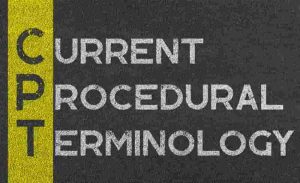Mastering the 99213 CPT Code for Efficient Medical Billing

The 99213 CPT code is used for regular doctor’s appointments with existing patients and represents and bills for the specific level of evaluation and management services the healthcare professional provides. The aim is to ensure these healthcare providers are appropriately compensated for their services to established patients.
According to the American Medical Association (AMA), this 99213 code represents the following outputs we shall discuss for a healthcare professional’s evaluation and management (E/M) service.
- Office or Other Outpatient Setting
- Established Patient
- Evaluation and Management
- Moderate Complexity
- Visiting Time
Short Summary
The Medical 99213 CPT Code and other billing codes in the healthcare setup are mainly designed for the effective and consistent communication of the different medical services. The CPT Code 99213 is used for the following purposes.
- Common Platform of Communication between Healthcare, Insurance, and Stakeholder Professionals.
- In-office or Outpatient Visits or Consultations
- Detailed Patient History and Examination
- Medical Decision-Making
99213 CPT Code: Introducing Medical Codes
The American Medical Association (AMA) maintains the standardized and widely used Current Procedural Terminology (CPT), often knowns as the medical code. This system of alphanumeric codes describes medical procedures, services, and treatments provided by healthcare professionals.

The Current Procedural Terminology (CPT) codes are used for several purposes that ensure the accurate and consistent communication of medical services leading to quality healthcare services and improved patient care.
- Standardization
- The description and reports of medical procedures, services, and treatments are prepared under the standardized system.
- Billing and Reimbursement
- The accurate identification and reporting of the specific medical services, facilitating billing, and determining the reimbursement rate for the healthcare services.
- Documentation and Medical Records
- Preparing the proper documentation of medical services within the patient’s record and providing standardized care, future reference, and legal and regulatory compliance.
- Data Analysis and Research
- The data from the CPT-coded services help researchers, policymakers, and healthcare organizations analyze and research in various medical health sectors.
- Communication and Collaboration
- The common channel under CPT codes between healthcare providers, insurance companies, researchers, and other stakeholders offers clear and precise communication about the specific procedures and services.
Several different CPT codes cover a more comprehensive range of medical procedures, evaluation processes, and healthcare services.
- Evaluation and Management (E/M) Codes – (99201-99499)
- Surgical Codes – (10000-69999)
- Radiology Codes – (70000-79999)
- Laboratory and Pathology Codes – (80000-89999)
- Anesthesia Codes – (00100-01999)
- Medicine Codes – (90000-99199)
- Mental Health Codes (90801-90899)
- Physical Therapy and Rehabilitation Codes – (97001-97799)
See More: Latest Trends Surgical Tech Schooling
These codes can facilitate a more accurate and informed discussion with your healthcare providers or insurance company and help you navigate the healthcare system effectively through existing CPT codes in medical billing and other associated services.
It is also essential to consider the other medical codes used in the healthcare setup as follows, however, CPT codes are primarily used in the United States of America.
- HCPCS (Healthcare Common Procedure Coding System) codes
- DRG (Diagnosis-Related Group) codes
- ICD-10 (International Classification of Diseases, 10th Revision) codes
- LOINC (Logical Observation Identifiers Names and Codes) Codes
- NDC (National Drug Code) codes
- SNOMED CT (Systematized Nomenclature of Medicine Clinical Terms) Codes
- DSM-5 (Diagnostic and Statistical Manual of Mental Disorders, Fifth Edition) Codes
- Revenue Codes
- SNOMED CT (Systematized Nomenclature of Medicine – Clinical Terms)
Such CPT codes help billing, organizing, and documenting medical services within a patient’s medical record. They also ensure uniformity and consistency in the documentation of healthcare services and strengthen communications among healthcare providers, insurers, and other stakeholders.
Although the CPT codes are regularly updated, you must consider the most recent version of the Current Procedural Terminology (CPT) Codebook or get help from a qualified medical coder or billing specialist to ensure accuracy.
A basic understanding of the CPT codes might help you advocate and review your medical bills and EOB statements for accuracy; it also helps to communicate with an insurance company for coverage and reimbursement.
See More: Can a Nurse Become a Doctor?
What is CPT code 99213?
CPT code 99213 falls under the Evaluation and Management (E/M), the primarily used Medical code in the United States, representing the specific level of in-office or outpatient healthcare setting or consultation with an established patient.

The 99213 CPT code establishes a common platform between healthcare professionals, insurance companies, and stakeholders to communicate and standardize specific medical services.
The CPT code 99213 is used for in-office or outpatient visits or consultations that involve a 15-minute duration, detailed patient history, detailed examination, and moderate complexity medical decision-making with an established patient.
The detailed patient history may include the chief complaint of the patient, history of the present illness, review of the systems, and past family, social and medical history under the 99213 medical code.
A focused examination can be carried out for the affected body systems associated with the patient’s chief complaint under the detailed patient history in the billing code 99213.
Patients’ medical conditions can be evaluated and analyzed deeply, accessing the present scenario of the patient, reviewing diagnostic test results, and determining the appropriate treatment method and plan for the patient under the Medical decision-making of moderate complexity.
See More: Get Nursing School Without Prerequisites
CPT Code 99213 Description
As we have seen, the CPT Code 99213 is commonly used for office visits or other outpatients’ medical services, where the established patients’ medical conditions are evaluated and managed for an overall improved healthcare system.
Here, we have also assisted information regarding the CPT code 99213 description, but before that, we shall understand what we mean by the established patient.
What is an Established Patient?
An established patient refers to the ongoing relationship between the individual patient and the healthcare provider or medical practice under the 99213 procedure code.
A person who has already received medical services from a healthcare provider or medical services and currently undergoing treatment from the same healthcare provider or within the same medical services is recognized as the Established Patient.
The following table will help you understand the differences between an established and a new patient, applicable in the 99213 CPT code description.
| Sr No. | Aspect | Established Patient | New Patient |
|---|---|---|---|
| 1 | Relationship | The provider knows medical history, conditions, and treatments. | Previous encounters with the same provider. |
| 2 | Continuity | An ongoing relationship with the provider. | No established relationship. |
| 3 | Familiarity | The provider knows medical history, conditions, and treatments. | No previous encounters with the provider. |
| 4 | Follow-up Care | It often requires follow-up visits for ongoing management. | Initial visit or for new concerns. |
| 5 | Coding/Billing | May use specific E/M codes for established patients. | The provider has limited or no knowledge. |
Following is the CPT Code 99213 Description; you can refer to them for a better understanding and clarity of thought about the healthcare system.
- Office or Other Outpatient Setting
- This medical code 99213 is used whenever a patient visit occurs, like a clinic or ambulatory care center in the office or another outpatient setting.
- Established Patient
- Under the 99213 CPT code, we discussed the established patients having an existing relationship with the healthcare provider or the medical practice.
- Evaluation and Management
- During the patient encounter, this medical code 99213 provides evaluation and management. The process involves reviewing their medical history, assessing the patient’s condition, making medical decisions regarding diagnosis and treatment, and conducting a relevant examination.
- Moderate Complexity
- Medical decision-making involves moderate complexity during the patient’s care. The 99213 CPT code signifies that the patient’s conditions are not overly complicated or too complex.
- Time or Duration
- The time or duration of the office or outpatient visit is approximately 15 minutes. However, it is not the sole determining factor under the CPT code 99213.
See More: How to Be a Pharmacist?
What are the Resources for Procedure Code 99213?
For guidance and accurate coding, there are several references you can refer to while assigning and using procedure code 99213. We have derived some commonly used resources that may help you in your 99213 CPT code description.
- CPT Codebook
- An annual CPT Codebook published by The American Medical Association (AMA) provides detailed descriptions and guidelines, including code definition, documentation requirements, and other modifiers.
- CPT Assistant
- This is a newsletter published by the AMA providing in-depth guidance and explanations, guidance, and coding examples for various CPT codes; it helps understand the correct use and documentation requirements.
- Local Coverage Determinations (LCDs)
- It guides covered services and coding requirements within specific geographic locations or regions. LCDs are issued by the Medicare Administrative Contractors (MACs). It adds information and clarification to the application of the 99213 CPT code.
- Medicare and Third-Party Payer Guidelines
- Specific requirements, documentation criteria, and any additional coding instructions are mentioned in these guidelines for reporting the medical code 99213 after reviewing the guideline and policies.
- Professional Coding Organizations
- Professional coding organizations like the American Academy of Professional Coders (AAPC) and the American Health Information Management Association (AHIMA) provide resources, forums, and educational materials to practice coding, that includes the insights on 99213 procedure code.
See More: Best Medical Schools
Conclusion
This article comprehensively discussed the 99213 CPT code, associated billing, medical, procedure code 99213, and the 99213 CPT code description. We have also discussed the differences between established and new patients applicable in the medical codes and their resources.
FAQs
Is CPT 99213 an E&M code?
The CPT 99213 is indeed an Evaluation and Management (E/M) code. They are used for reporting the services provided for the evaluation and management of patients and help describe the complexity and intensity of the services performed by healthcare professionals.
Does 99213 need a modifier?
It depends on the payer’s or insurance company’s specific circumstances and requirements. However, when CPT code 99213 does not meet the necessary documentation criteria for that level of service, the modifier 25 or 59 may undoubtedly be required, although, in general, the chances are less.
Who can bill CPT 99213?
99213 CPT code can be billed by various healthcare professionals who are authorized to provide evaluation and management (E/M) services to patients, such as Medical doctors (MDs), Nurse Practitioners (NPs), Physician Assistants (PAs), and other related professionals.
How much is a 99213 visit?
The average cost of the CPT code 99213 varies based on geographical location, the healthcare provider’s billing practices, and the type of insurance coverage. However, the national average reimbursement for a 99213 visit is typically in the range of $70 to $130.



